Exercises,Workouts
Useful articles
A well-developed upper chest gives the male figure athleticism and strength. It always looks spectacular, whether you’re on the beach or just wearing a skin-tight tee. By the way, it is this part that grows the fastest, since it does not require particularly difficult exercises. However, the best upper chest workout for mass should be used for this.
1. What Are The Upper Chest Muscles?
Pectoralis major is a single unit, so the question of whether it is possible to develop the upper or lower part of it separately is very debatable. Just like there is no separate upper abdominal and lower abdominals. This is one and the same muscle that contracts as a whole. However, the very broad pectoralis major muscle consists of several bundles, on which efforts can be accentuated if the exercises for upper chest workout are slightly modified.
2. How To Workout Your Upper Chest
After reading this article, you will learn how to train your upper chest. Moreover, you will make your body powerful, beautiful and strong. Your breasts will become aesthetically pleasing if you adhere to the recommendations outlined in this article.
You should not perform a variety of exercises without understanding their essence. This will result in the use of the wrong muscles and you will end up with an ugly chest shape.
You will achieve your desired result only when you draw up the correct upper chest workout plan and follow it.
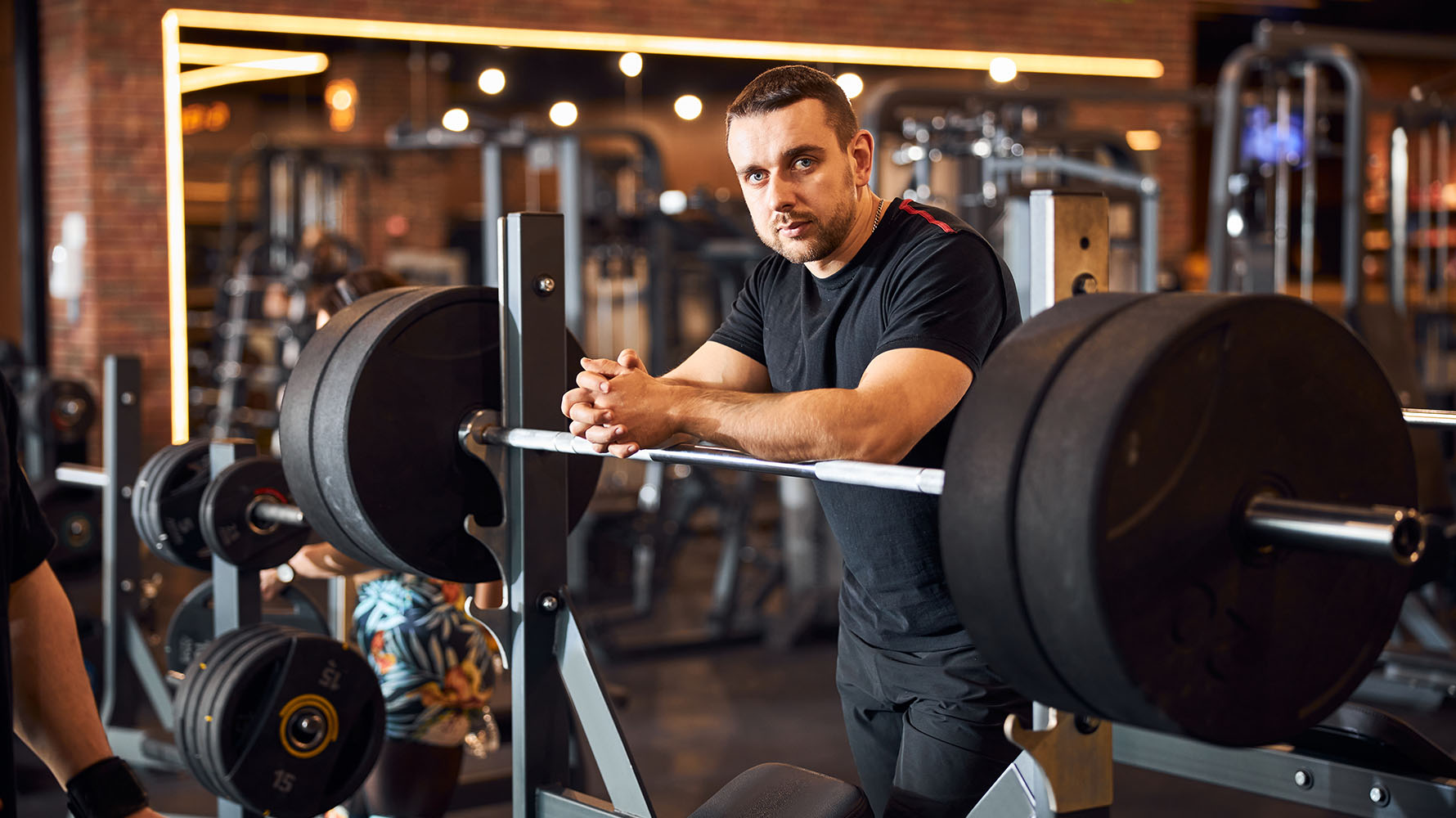
3. Exercises For Your Upper Chest
Exercises for the pectoral muscles can be performed both with a barbell, and with dumbbells or on machines. Dumbbells and a cable crossover allow you to use stabilizing muscles in the exercise and specifically pump individual chest bundles. The barbell is the preferred choice when working with heavy weights, as its amplitude of motion is reduced:
We have selected exercises for the best upper chest workout. Let’s take a closer look at them.
3.1 Decline Push-Up
When the legs are higher than the head, the weight of the body is mainly carried by the arms. And the hands, as you know, are smaller and weaker than the legs. Therefore, this type of push-up is a complicated variation of the classic exercise. You should only use such pushups in the upper chest workout if you have already mastered the basic movement perfectly.
The Decline Push-Up is actually the opposite of the Incline Bench Push Up. At the same time, the upper part of the chest is emphasized. More specifically, the load distribution looks like this:
- Pectoral muscles (emphasis on the upper part);
- Deltoid muscles (anterior bundles);
- Triceps;
- Abs and back muscles, which work statically.
The wider you put your hands, the more active your chest will be, especially the outer part. The narrower the hands, the greater the load on the triceps. With a narrow setting of the hands, the load that goes to the pectoral muscles is shifted to their inner part.
Also, the higher you set your feet, the more your deltoids are used. If we continue to raise our legs and get to the Handstand Push-Up, it will actually be a shoulder exercise.
The optimal tilt of the body for the development of the upper chest is 30–45° at the lowest point (chest nearest to the floor). In the starting position, put your feet on a bench or exercise ball. In the latter case, the body is actively working.
3.2 Incline Bench Press
The Incline Bench Press is the most important exercise for developing your upper chest.
When you do the Barbell Bench Press on a horizontal bench, the following muscles work:
- Major and minor pectoral muscles (middle part).
- Anterior bundles of deltoid muscles.
- Triceps.
It is believed that the classic Barbell Bench Press distributes the load evenly across the entire chest. However, the main load falls on the central part. If the top or bottom of the chest looks much smaller, then the Incline Bench Press comes to the rescue.
When we move the body to an inclined position, the main working muscle groups do not change. However, the load is distributed differently. We can purposefully make the top or bottom of the chest work.
The redistribution of the load depends on the angle of inclination:
- Performing a press at an angle of 30° loads mainly the middle and slightly upper part of the chest.
- 45°: the load is transferred to the upper chest, releasing the middle.
- 60°: the weight of the bar is transferred to the anterior deltoid muscles and triceps, leaving some of the load to the very top of the pectoral muscles.
- The Bench Press can also be done upside down. This is a proven way to pump up your lower chest.
Thus, by varying the press technique, you can build the desired breast definition.
The Incline Bench Press is not recommended as a stand-alone exercise. It is best to do it after basic exercises. For example, after the classic Barbell Bench Press. As a last resort, after pull ups on parallel bars with weight.
First, you need to give your body a general load and only then can you start working on specific areas of the pectoral muscle.
The Incline Bench Press is very helpful for beginners to develop the entire upper body mass evenly.
3.3 Leverage Incline Chest Press
The Leverage Incline Chest Press is a composite exercise that targets the pectoral muscles. Additionally, the muscles of the shoulders and triceps are loaded. This exercise is a composite exercise, as it involves several muscle groups.
The technique for performing the Leverage Incline Chest Press:
- Set the optimal weight for you and adjust the seat for your height. At the beginning of the movement, the machine handles are located in the upper chest region. Your chest should be pulled back, your head pressed against the back of the machine, and your shoulder blades are pulled in. This is the starting position.
- Push the machine handles forward while controlling the position of the elbows.
- Fix this position for 1-2 seconds at the top of the movement. Lower the machine handles to a position just above the starting position, maintaining muscle tension throughout the exercise.
- Do 3-4 sets of 10-15 reps.
Tips for performing the Leverage Incline Chest Press:
- Although it is a machine, the slightest deviation from the correct technique can turn it from a chest exercise to a shoulder exercise.
- Do not set the seat too low. Because of this, you will have to bend forward, bend your back and even break away from the seat, which is unacceptable.
- Keep your back straight. Set the seat slightly higher than it appears. Do not pull away the pelvis and, under the control of the abdominal muscles, start pressing exclusively at the expense of the pectoral muscles.
3.4 Plyometric Push-Up
The Plyometric Push-Up is performed with an explosive force and the highest amplitude. This exercise differs from simple push-ups in that from the lower position the athlete makes a sharp dash upward and lifts the arms from the floor. With this, you can add a variety of hand claps.
The performance of this unique exercise is possible only with controlled and synchronized muscle work. It is due to the burst that the explosive force of the speed is developed. The Plyometric Push-Up is good for allowing you to burn a significant number of calories in a short workout.
If you do this exercise regularly, the following indicators will improve:
- Coordination and balance;
- Explosive strength of the shoulder muscles;
- Speed of pressing;
- Neuromuscular connections between the brain and the muscles of the torso.
Starting position: lying down position, back should be straight, hands spread slightly wider than shoulders, and gaze is directed in front of you.
Execution: do several sets of 10-12 reps.
The Plyometric Push-Up can be used as an upper chest workout at home. This movement will help you improve the performance of other basic exercises and generally support the ligamentous apparatus.
Since Plyometric Push-ups require serious effort, there are also contraindications. It is not recommended to perform this exercise for those with diseases and damage to joints, inflammation in the deltoid muscles or problems with tendons. The Dumbbell Bench Press can change the push-ups in this case. Lever machines will also be an adequate fit.
3.5 Incline Dumbbell Flye
The Incline Dumbbell Flye is the perfect exercise if your goal is to stretch your pectoral muscles as much as possible. Stars of Bodybuilding use this move a lot in their upper chest workout. It is believed that there is no better exercise for the inner part of the chest than this.
The Incline Dumbbell Flye technique:
- First you need to take dumbbells that are suitable for you in terms of strength. Then sit on the bench.
- Get down to the back of the bench. Legs need to be spread wide and firmly against the floor. Also, be sure to keep the shoulder blades, pelvis and back against the bench. Stretch your pectoral muscles and look up.
- Raise the dumbbells so that the angle is 90° in relation to the floor. The palms are facing each other. Bend your elbows a little and lock this position throughout the movement.
- Inhale and begin to spread the equipment using only elbow movements.
- Stretch the pectoral muscles as much as possible until the dumbbells are at the level of the corner of the bench.
- Exhale and return to the starting position, but do not allow the dumbbells to touch at the top point.
The Incline Dumbbell Flye is not recommended for biceps and shoulder injuries. Athletes with pectoral strains and injuries should perform this exercise very carefully.
3.6 Reverse Grip Bench Press
The Reverse Grip Bench Press is designed for the development of the triceps and upper chest. This exercise is rarely performed, as most athletes prefer basic movements.
Add the Reverse Grip Bench Press to your upper chest workout plan to give extra stress to your muscles. Since in this exercise an additional load is applied to the biceps and anterior deltoid muscles, we do not recommend training the shoulders and flexors of the arms on the same day.
Starting position: Lie on a bench. The pelvis, back, shoulders and head should rest on the surface of the bench. The feet rest on the floor and are slightly spaced. The legs are bent at the knees. You need to lie down steadily. The barbell should be level over your eyes.
How to do the Reverse Grip Bench Press:
- Grasp the bar with a reverse grip, and wrap your thumbs around it. This will prevent the barbell from rolling onto your chest. Keep your hands exactly shoulder-width apart.
- Set your legs so that you lie firmly and do not stagger to the sides. Place your heels on the floor. If you spread your legs wider, then the position will be more stable.
- A partner helps to remove the barbell. At your request, he removes the bar and releases it. All this time, you keep your hands on the barbell and control its movement. The partner removes his hands when bar is at the level of your diaphragm.
- Now lower the barbell so that your elbows don’t come out to the sides. Slowly lower it onto your diaphragm and raise it faster. Complete 10 reps. Consider adding weight.
- If the weight is correct, then do 3 sets of 10 reps as your first workout.
- If it is easy for you, then adjust the weight so that you can perform the exercise the required number of repetitions in the correct technique.
When not to do this exercise:
- If you do not have a partner.
- If you once had a shoulder injury.
- When you have sore elbows or a bicep injury.
3.7 Low To High Cable Flys
Low To High Cable Flys is an isolated exercise that develops the upper chest. This movement should be done at the end of the workout. Use this exercise as the second or third in your workout program.
The technique for performing Low To High Cable Flys:
Set the required weight. Then take your handles and stand in the middle. Place one leg forward and bend it at the knee. Bend your body 10-15%. Bend your elbows slightly to avoid injuring the joints. When doing the exercise, you need to strain your forearms. It will be more technical if you put your legs parallel to each other.
Inhale and pull the handles with your shoulder joints to chest level. It is necessary to bring the hands together. Exhale when you overcome the difficult part of the exercise. At the top point, linger for a short period of time and slowly lower your arms.
Common mistakes:
- Too large weight due to which the whole body is included in the work.
- Doing the exercise with straight elbows leads to injury.
- Do not use other body parts when raising your arms.
3.8 Dumbbell Pullover
The Dumbbell Pullover helps to work out the pectoral muscles. This exercise also affects the latissimus dorsi muscles.
Training the upper chest using the Dumbbell Pullover alone will not work. This exercise is auxiliary. It makes sense to perform it in combination with other exercises for the pectoral muscles.
Now let’s talk about muscle work. During the execution of the Dumbbell Pullover, the following muscles are loaded:
- Pectoralis major;
- Latissimus dorsi muscle;
- Triceps;
- Additionally involved are: serratus anterior muscles, external intercostal muscles, thoracic diaphragm;
- Assistants: shoulders and brachialis.
Dumbbell Pullover Technique:
- Lie on a horizontal bench. The legs rest on the floor and are bent at an angle of just over 90°.
- Take a dumbbell with both hands. Raise it over your head. The arms should be slightly bent at the elbows of the arms. This is the starting position.
- While inhaling, gently lower the dumbbell behind your head. In the process of movement, only the shoulder joints work.
- At the lowest point, feel the maximum stretch of the chest.
- As you exhale, lift the dumbbell to its starting position.
- Do the planned number of repetitions.
You can do this exercise both along and across the bench. Choose for yourself any optimal option.
3.9 One-Arm Landmine Press
The One-Arm Landmine Press is a basic multi-joint exercise. The purpose of this movement is to work out the deltoid muscles. The forearms and triceps work to a lesser extent. This exercise is performed with free weight, so the number of sets and weight are selected individually.
How to do the One-Arm Landmine Press:
- Attach the end of the bar to a special mechanism or place it in a corner. Set the required weight on the other end of bar.
- Raise the bar with one hand to your shoulder.
- Spread your legs wide (you can bend them a little at the knees).
- Bend your lower back slightly.
- Hold the bar with your bent arm straight over your shoulder.
- Press the bar forward and upward with your elbow extended.
- Lock the movement at the top for a moment.
- While inhaling, return to the starting position.
There is a variant of this exercise, when the bar is thrown from one hand to the other. Another way: perform the Landmine Press with both hands at the same time. There is also an option with a squat. However, be careful when performing the movement with a lot of weight.

4. Tips For An Effective Upper Chest Workout
Very often athletes find themselves in stagnation in the development of the upper chest. This may be due not only to the wrong exercise technique, but also to other reasons. Let’s take a look at a few tips to help you improve your upper chest workout.
4.1 Track Your Progress
Don’t be afraid to increase weight as you get stronger. After all, nothing slows down progress more than working with the same weight. Since the muscles get used to it and stop responding to the load. The number of repetitions also affects the progress of training. Try to increase the weight or the number of reps.
Working with free weights provides an opportunity for maximum muscle growth. Therefore, prioritize barbell or dumbbell exercises.
4.2 Lift To Failure
You don’t have to fear muscle failure if you really want to stimulate muscle growth. Your working set can be considered unfinished if you can do a few more reps.
As the load increases, more muscle fibers are destroyed. It is those few repetitions performed after a muscle failure that guarantee you greater muscle growth. However, do not get carried away with this, as it can lead to overtraining.
The best option is to do 1-2 reps of this exercise after reaching muscle failure in the last or hardest set.
4.3 Challenge Yourself
If you want to see real results, don’t be afraid to challenge yourself. This can mean doing supersets or drop sets, which is a great way to work to failure. Rest between sets if necessary, but continue if you can to complete the superset.
There are many advanced techniques for the upper chest workout. If you are training with a partner, consider these:
- Forced repetitions. You do as many reps as you can, and then your partner provides the necessary help moving the equipment (barbell or dumbbells) up to do a few more;
- Negative repetitions. Your partner lifts weights when you reach muscle failure. However, you fully focus on the lowering phase, which should last at least 5 seconds. This method works better with barbells and most machines than dumbbells.
4.4 Don’t Do Chest Alone
Train more than just your chest. Include back and shoulder exercises on that day. This will help you to achieve more results in less time.
Arnold Schwarzenegger achieved success when he decided to combine exercises for the chest and back muscles into supersets. The result of such training impressed many athletes.

5. Mistakes To Avoid When Doing Upper Chest Exercises
Exercises for the chest muscles have gained universal popularity because of their effectiveness. But at the same time, athletes make typical mistakes that interfere with the growth of the strength of this muscle group.
5.1 You Overtrain Your Chest Muscles
Overtraining is one of the biggest mistakes beginners make. The sooner you figure out how to avoid this, the sooner you will be on the right path to progress. We know that you enjoy exercising and your favorite place is the gym. But we must remember that muscles grow outside the gym, and not in it. Therefore, make sure that after the next achievement in training, you give your body enough time to recover.
5.2 You Single Out Your Chest Muscles
It is important to pay attention not only to the muscles of the chest, but also to the entire musculature. You also need to train your arms, abs, legs and back. Then your figure will be proportional, and the result of the training will not be long in coming. If you focus on only one muscle group, then nothing will work. After all, there are no athletes with voluminous breasts and thin arms, as well as with a large “beer” belly. You need to get your whole body in order.
5.3 You Always Start With The Bench Press
Bodybuilders who always start training with the Barbell Bench Press often have deficiencies in the development of the upper and lower chest. Over time, this becomes very noticeable. Some athletes have a genetically underdeveloped body area, which forces them to redouble their efforts when training lagging areas.
Exercise variability should be used so that the body does not adapt to training and does not stagnate. You shouldn’t change your training plan drastically. We recommend sometimes using different equipment, swapping exercises or introducing new ones.
5.4 You Stick To The Same Angles
Upon closer examination of the weight bench, you will notice several holes and a retainer. You can adjust the tilt with them. Usually, the angle of inclination of the bench is set to 30-45°. The higher angle redistributes the load from the upper chest to the deltoid muscles. There is no hard and fast rule that says you should use the same angle at all times. So change it a bit to better develop the upper chest.
Start using different lean angles to target muscle fibers in different ways.
6. The Bottom Line On Upper Chest Workouts
In this article, we’ve looked at ways to improve your upper chest workout. Use the recommended exercises, listen to helpful advice, and try to avoid mistakes. You will certainly achieve excellent results if you train with your mind and due diligence. Good luck!
Thank! Your message has been sent successfully.



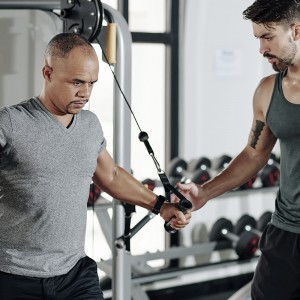
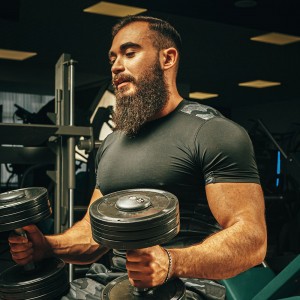


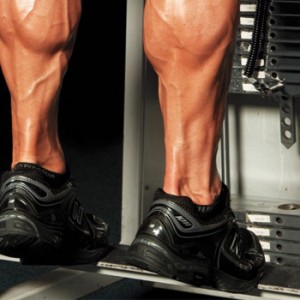
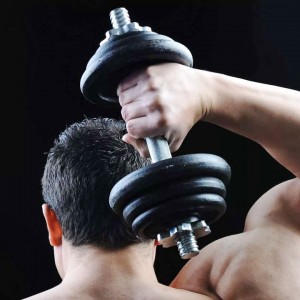
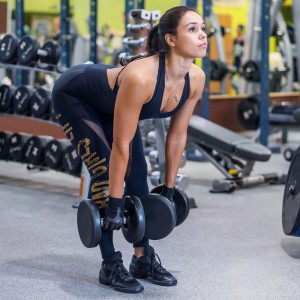

Questions and answers 0